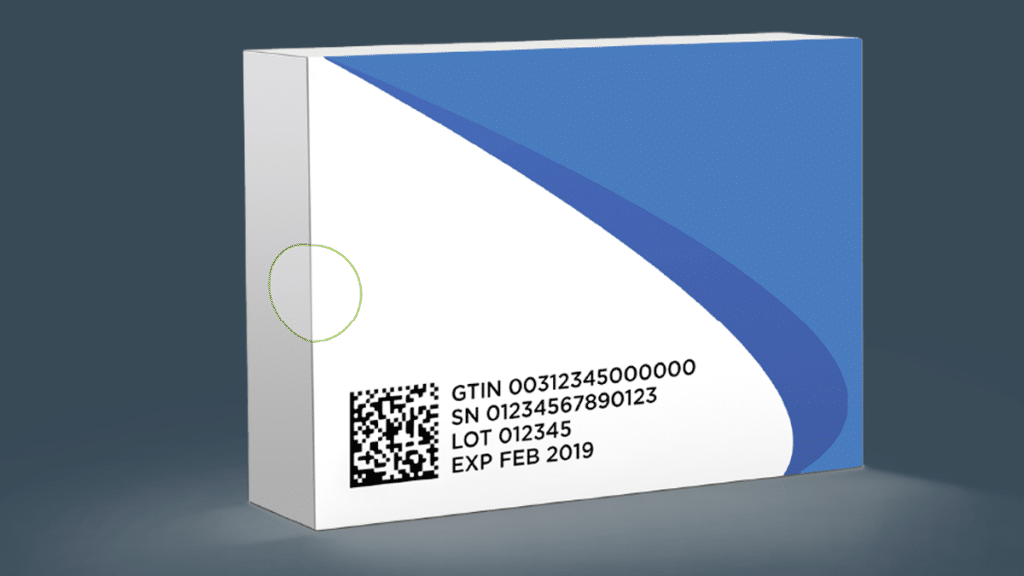A Diretiva de Medicamentos Falsificados (FMD) exige que todo medicamento vendido na União Europeia tenha um dispositivo antiviolação e seu próprio identificador exclusivo em formas legíveis por máquina e por humanos. Seja aplicado na fábrica ou por um empacotador, a forma legível por máquina deve ser um código de barras 2D que contenha o seguinte:

A Diretiva sobre Medicamentos Falsificados (FMD) exige que todo medicamento vendido na União Europeia tenha um dispositivo antiviolação e seu próprio identificador exclusivo em formas legíveis por máquina e por humanos. Seja aplicado na fábrica ou por um empacotador, a forma legível por máquina deve ser um código de barras 2D que contenha o seguinte:
Para cada embalagem introduzida no mercado, os dados devem ser transmitidos para o Hub Europeu gerenciado pela Organização Europeia de Verificação de Medicamentos (EMVO). Em seguida, a EMVO transmite uma cópia de seus dados para os repositórios nacionais onde você pretende distribuir seu produto.
Se você ainda está tomando medidas para entrar em conformidade ou não iniciou sua estratégia de serialização, o tempo está se esgotando.
A Systech é a líder global em serialização. Fomos os pioneiros. Hoje, 95% das principais empresas farmacêuticas nos consideram seu fornecedor de soluções. Nossas soluções de pilha de serialização atendem a todos os requisitos de FMD da UE: randomização de número de série, codificação de código de barras, impressão, verificação e o software necessário para enviar dados de serialização e roteamento para o European Hub. Nossos mais de 30 anos de experiência nos ensinaram como simplificar e padronizar o processo para que você esteja em conformidade mais rapidamente.
Fazemos parceria com você desde o início para determinar a melhor estratégia de serialização para suas necessidades individuais de linha. Nossa plataforma única permite a configuração com componentes plug-and-play comprovados, em vez de personalização. Para garantir o futuro de seu investimento, nosso software se ajusta facilmente a:
Simplifique a conformidade com a Diretiva de Medicamentos Falsificados (FMD) da UE com o Systech. Agende uma consulta gratuita agora!
Como os Estados Unidos são, de longe, o maior mercado farmacêutico do mundo, a conformidade com os requisitos...
Apresentamos uma lista de verificação com os 5 principais aspectos a serem considerados sobre o TCO ao avaliar os parceiros de serialização...
A Pharmaceutical Market Europe conversou com Remi Turbet Delof, da Systech, sobre seu trabalho com os clientes para ajudá-los...
Explore o Systech Insight™ para acessar seus dados de linha para obter maior visibilidade e operações aprimoradas.